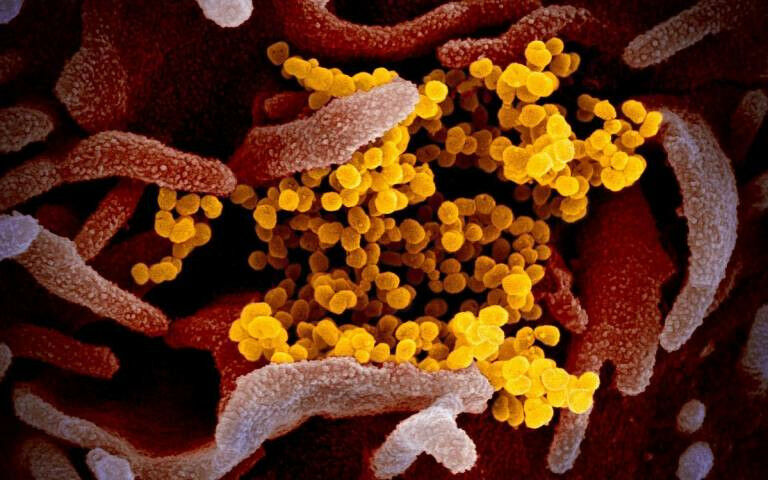博文
COVID-19患者可能在感染后18个月仍保持较高的死亡风险
||
COVID-19患者可能在感染后18个月仍保持较高的死亡风险
诸平
据英国伦敦大学学院(University College London)2023年1月23日报道,中英研究人员合作研究显示,COVID-19患者可能在感染后18个月仍保持较高的死亡风险(COVID-19 patients may retain elevated risk of death 18 months after infection)。
根据中国香港大学(The University of Hong Kong, China)和伦敦大学学院研究人员共同领导的一项针对近16万名未接种疫苗的(大多数是60岁以上的成年人)参与者的研究,COVID-19在短期和长期内与心血管疾病和死亡的高风险相关。相关研究结果于2023年1月19日已经在欧洲心脏病学会(European Society of Cardiology)期刊《心血管研究》(Cardiovascular Research)杂志网站发表——Eric Yuk Fai Wan, Sukriti Mathur, Ran Zhang, Vincent Ka Chun Yan, Francisco Tsz Tsun Lai, Celine Sze Ling Chui, Xue Li, Carlos King Ho Wong, Esther Wai Yin Chan, Kai Hang Yiu, Ian Chi Kei Wong. Association of COVID-19 with short- and long-term risk of cardiovascular disease and mortality: a prospective cohort in UK Biobank. Cardiovascular Research, Published: 19 January 2023, cvac195. DOI: 10.1093/cvr/cvac195. https://academic.oup.com/cardiovascres/advance-article/doi/10.1093/cvr/cvac195/6987834
参与此项研究的还有来自中国香港特别行政区健康数据发现实验室{ Laboratory of Data Discovery for Health (D24H), Hong Kong Special Administrative Region, China}、中国深圳市福田区香港大学深圳医院(The University of Hong Kong-Shenzhen Hospital, Futian District, Shenzhen, China)以及英国阿斯顿大学(Aston University, Birmingham, UK)的研究人员。
与未感染者相比,COVID-19患者在感染的前三周内死亡的可能性高出81倍,并且在18个月后仍保持高出5倍。
上述论文的共同通讯作者之一、伦敦大学学院药学院(UCL School of Pharmacy)和香港大学黄志基(Professor Ian Chi Kei Wong)教授说:“与未感染的参与者相比,COVID-19患者更容易患上多种心血管疾病,这可能导致他们死亡的风险更高。研究结果表明,COVID-19患者在从急性疾病中恢复后应接受至少一年的监测,以诊断感染的心血管并发症,这是长新冠(long COVID)的一部分。”
这项研究比较了感染者心血管疾病和死亡的发生率与2020年12月之前招募的未感染者相比,当时英国没有疫苗可用。从2020年3月至2020年11月诊断出7500多名COVID-19感染患者是从英国生物银行(UK Biobank)确定的。
在研究期间(2020年3月至2021年8月随访结束)和大流行前的历史队列(2018年3月至 2018年11月),将每位患者与最多10名未感染COVID-19的人进行匹配。每个未感染组有超过70000名参与者,他们在年龄、性别、吸烟、糖尿病、高血压、心血管和其他健康状况、体重指数、种族和贫困方面与COVID-19组相似。在这三组中,平均年龄为66岁,男女人数几乎相等。
黄志基教授解释说:“历史对照队列被包括在内,以排除大流行期间常规医疗服务减少或取消的影响,这导致即使未感染的人健康状况恶化和死亡率增加。”
数据来自包括主要心血管疾病(心力衰竭、中风和冠心病的综合症)在内的医疗和死亡记录;许多心血管疾病,如中风、心房颤动和心肌梗塞;死于心血管疾病;及全因死亡(all-cause death)。对急性期(COVID-19诊断后21天内)和急性期后(从诊断后第22天开始,持续长达18个月)的关联进行了评估。具有特定结果历史的参与者被排除在该分析之外。
与两个未感染的队列相比,COVID-19患者在急性期发生主要心血管疾病的可能性大约高出4倍,在急性期后发展成主要心血管疾病的可能性高出40%。与未感染者相比,COVID-19患者的死亡风险在急性期高出81倍,在急性期后高出5倍。重症COVID-19患者比非重症患者更容易患上主要心血管疾病或死亡。
与未感染的参与者相比,COVID-19患者在短期和长期内患多种心血管疾病的可能性更大,包括心肌梗塞、冠心病、心力衰竭和深静脉血栓形成。某些心血管疾病的风险——例如中风和心房颤动——在短期内在COVID-19患者中升高,但随后恢复到正常水平。
黄志基教授说:“这项研究是在第一波大流行期间进行的,未来的研究应该评估随后的爆发。之前的研究表明,接种COVID-19疫苗可能会预防并发症,需要进一步研究以调查其在减少感染方面的有效性。与未接种疫苗的患者相比,接种COVID-19疫苗的患者感染COVID-19 后心血管疾病和死亡的风险。”
欧洲心脏病学会(European Society of Cardiology)发言人、西班牙马德里国家心血管研究中心 (National Centre for Cardiovascular Research简称CNIC, Madrid, Spain) 的埃克托·布埃诺(Héctor Bueno)教授说:“COVID-19对心血管疾病患者产生了巨大影响,他们在大流行期间不太可能获得最佳护理并且更有可能死于感染。这项研究表明,COVID-19还会增加感染后第一周发生心血管并发症和死亡的风险,并在几个月内保持高水平,这表明对这些患者进行特定的心血管监测可能是合适的。”
此项研究人员警告说,他们不能说他们的发现是否可以推广到接种疫苗后感染的人,或者他们是否会在年轻人群中有所不同。感染状况是基于2020年的阳性检测结果得出的,那时还没有广泛使用快速检测,因此许多参与者要么出现症状,要么因其他原因住院,因此,研究人员无法确认这些发现在无症状感染者身上有多相似。
本研究由中国香港特别行政区大学教育资助委员会政府合作研究基金(Collaborative Research Fund from University Grants Committee of The Government of the Hong Kong Special Administrative Region, China,Ref. No. C7154-20GF)以及香港大学的启动基金(The start-up fund from the University of Hong Kong)资助。
上述介绍,仅供参考。欲了解更多信息,敬请注意浏览原文或者相关报道。
Aims
This study aims to evaluate the short- and long-term associations between COVID-19 and development of cardiovascular disease (CVD) outcomes and mortality in the general population.
Methods and Results
A prospective cohort of patients with COVID-19 infection between 16 March 2020 and 30 November 2020 was identified from UK Biobank, and followed for up to 18 months, until 31 August 2021. Based on age (within 5 years) and sex, each case was randomly matched with up to 10 participants without COVID-19 infection from two cohorts—a contemporary cohort between 16 March 2020 and 30 November 2020 and a historical cohort between 16 March 2018 and 30 November 2018. The characteristics between groups were further adjusted with propensity score-based marginal mean weighting through stratification. To determine the association of COVID-19 with CVD and mortality within 21 days of diagnosis (acute phase) and after this period (post-acute phase), Cox regression was employed. In the acute phase, patients with COVID-19 (n = 7584) were associated with a significantly higher short-term risk of CVD {hazard ratio (HR): 4.3 [95% confidence interval (CI): 2.6– 6.9]; HR: 5.0 (95% CI: 3.0–8.1)} and all-cause mortality [HR: 81.1 (95% CI: 58.5–112.4); HR: 67.5 (95% CI: 49.9–91.1)] than the contemporary (n = 75790) and historical controls (n = 75774), respectively. Regarding the post-acute phase, patients with COVID-19 (n = 7139) persisted with a significantly higher risk of CVD in the long-term [HR: 1.4 (95% CI: 1.2–1.8); HR: 1.3 (95% CI: 1.1– 1.6)] and all-cause mortality [HR: 5.0 (95% CI: 4.3–5.8); HR: 4.5 (95% CI: 3.9–5.2) compared to the contemporary (n = 71 296) and historical controls (n = 71 314), respectively.
Conclusions
COVID-19 infection, including long-COVID, is associated with increased short- and long-term risks of CVD and mortality. Ongoing monitoring of signs and symptoms of developing these cardiovascular complications post diagnosis and up till at least a year post recovery may benefit infected patients, especially those with severe disease.
https://blog.sciencenet.cn/blog-212210-1373295.html
上一篇:光子霍普夫子:形状像烟圈,行为像粒子的光
下一篇:科学家打开玻璃形成物理学的新窗口
